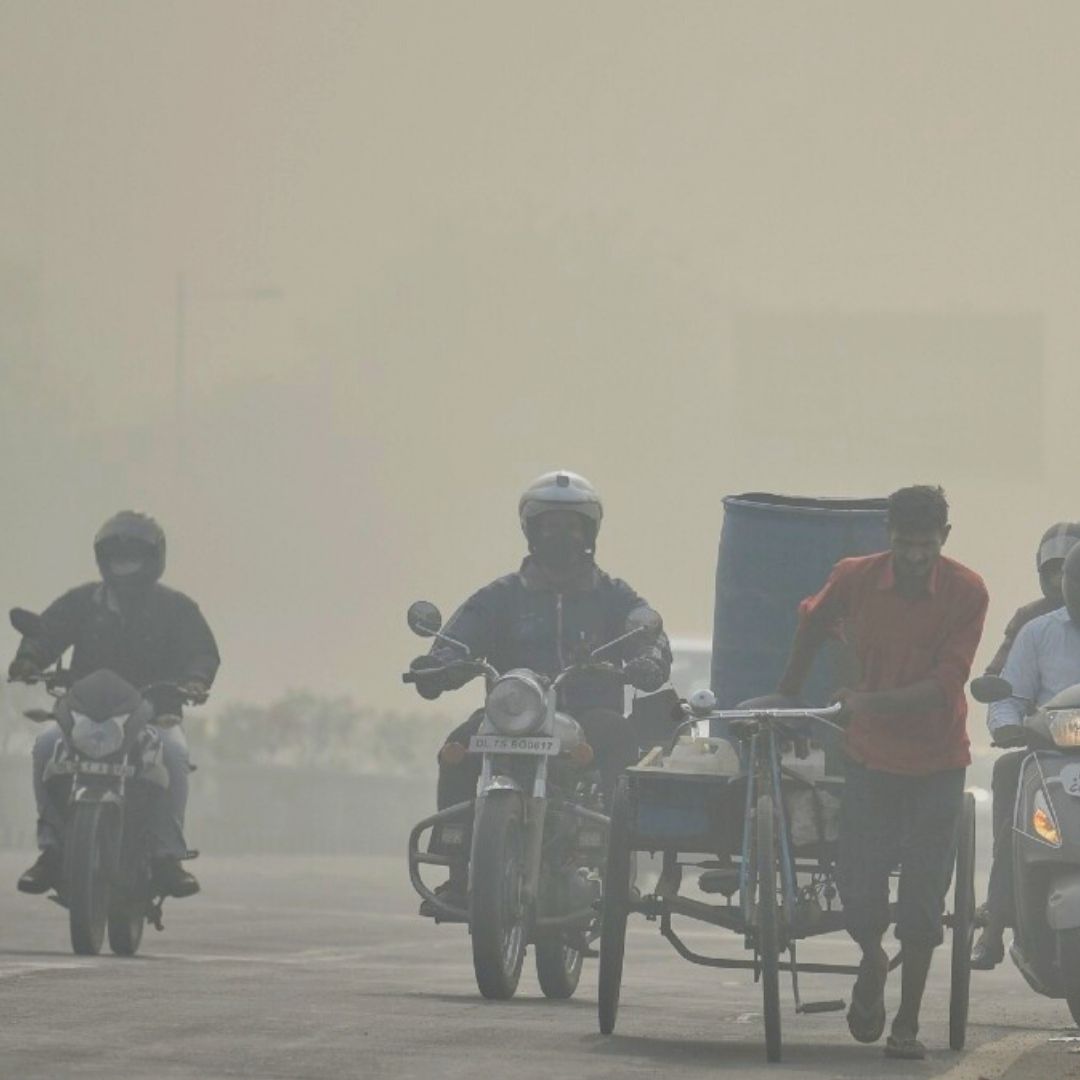
Photo Credit: ANI
First Major Smog Episode Strikes Delhi, Might Be Longest In 4 Years: Report
Writer: Snehadri Sarkar
While he is a massive sports fanatic, his interest also lies in mainstream news and nitpicking trending and less talked about everyday issues.
Delhi, 11 Nov 2021 11:02 AM GMT
Editor : Palak Agrawal |
Palak a journalism graduate believes in simplifying the complicated and writing about the extraordinary lives of ordinary people. She calls herself a " hodophile" or in layman words- a person who loves to travel.
Creatives : Snehadri Sarkar
While he is a massive sports fanatic, his interest also lies in mainstream news and nitpicking trending and less talked about everyday issues.
Centre for Science and Environment reported that the daily approximate contribution of smoke from farm fires from the middle of October to November 8 has been the lowest in the past four years.
The Green think-tank Centre for Science and Environment (CSE) on November 10 stated that the first severe smog episode has struck Delhi and the National Capital Region (NCR) which is expected to last more than two days.
While the seasonal smog in the national capital is intense, the daily approximate contribution of smoke from farm fires from the middle of October to November 8 has been the lowest in past four years, NDTV quoted a CSE report as saying.
A Significant Change
"Predictably, the season's first episode has been triggered by the combined effect of unfavourable weather conditions (cool and calm winds and inversion), stubble burning and firecrackers," CSE's executive director, research and advocacy Anumita Roychowdhury were quoted as saying by the media outlet.
In comparison with the first smog episode over the last four years, the current smog situation has matched the duration of the first smog of the 2018 and 2020 seasons -- both of which lasted for nearly six days. In case the condition remains the same, it might overtake the 2019 smog which lasted eight days, the CSE stated.
Some Staggering Numbers
In 2021, the average intensity of the smog so far is 329 micrograms per cubic metre each day, which remains lower than that of the 2020 smog (by 7%) and 2019 smog (by 3%). However, it is way more intense than the 2018 smog (approximately 9%).
The green think tank then went on to add how the extended duration for the smog being present this year despite relatively windier local conditions might be down to the lack of pollution control measures in Delhi.
The entire analysis is based on the real-time data obtainable from the current working air quality monitoring stations in the larger Indo-Gangetic Plain and Delhi-NCR.
Air quality in the national capital went down to 'hazardous' category after numerous people neglected the state's government's instructions and took to bursting firecrackers on Diwali. While Delhi and its nearby areas were covered in a thick blanket of smog the next day, citizens also complained about facing skin and breathing problems due to the poor air quality.
Also Read: Women In Canada Becomes World's First Patient Diagnosed With 'Climate Change'
 All section
All section














